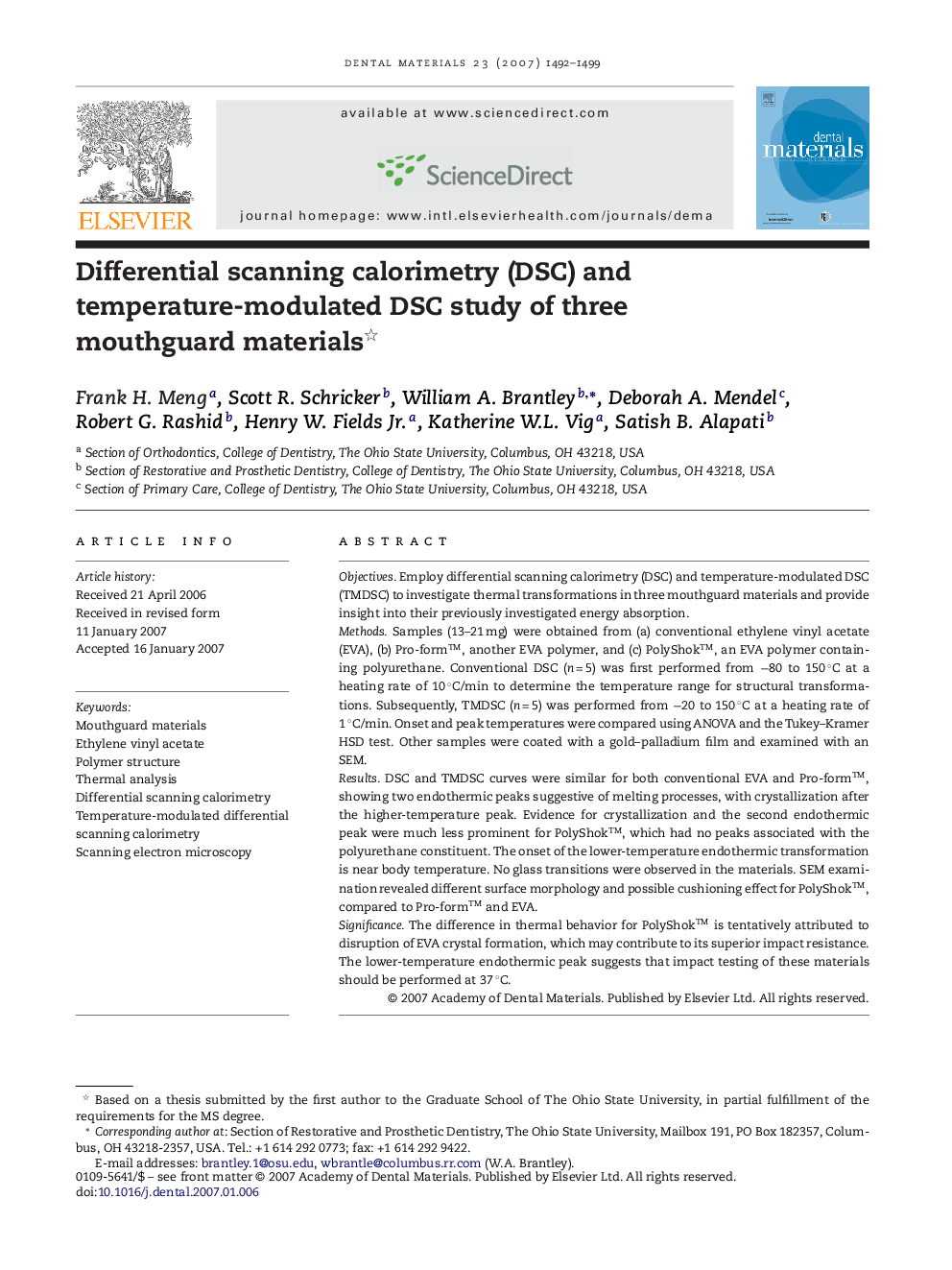| کد مقاله | کد نشریه | سال انتشار | مقاله انگلیسی | نسخه تمام متن |
|---|---|---|---|---|
| 1423092 | 986479 | 2007 | 8 صفحه PDF | دانلود رایگان |

ObjectivesEmploy differential scanning calorimetry (DSC) and temperature-modulated DSC (TMDSC) to investigate thermal transformations in three mouthguard materials and provide insight into their previously investigated energy absorption.MethodsSamples (13–21 mg) were obtained from (a) conventional ethylene vinyl acetate (EVA), (b) Pro-form™, another EVA polymer, and (c) PolyShok™, an EVA polymer containing polyurethane. Conventional DSC (n = 5) was first performed from −80 to 150 °C at a heating rate of 10 °C/min to determine the temperature range for structural transformations. Subsequently, TMDSC (n = 5) was performed from −20 to 150 °C at a heating rate of 1 °C/min. Onset and peak temperatures were compared using ANOVA and the Tukey–Kramer HSD test. Other samples were coated with a gold–palladium film and examined with an SEM.ResultsDSC and TMDSC curves were similar for both conventional EVA and Pro-form™, showing two endothermic peaks suggestive of melting processes, with crystallization after the higher-temperature peak. Evidence for crystallization and the second endothermic peak were much less prominent for PolyShok™, which had no peaks associated with the polyurethane constituent. The onset of the lower-temperature endothermic transformation is near body temperature. No glass transitions were observed in the materials. SEM examination revealed different surface morphology and possible cushioning effect for PolyShok™, compared to Pro-form™ and EVA.SignificanceThe difference in thermal behavior for PolyShok™ is tentatively attributed to disruption of EVA crystal formation, which may contribute to its superior impact resistance. The lower-temperature endothermic peak suggests that impact testing of these materials should be performed at 37 °C.
Journal: Dental Materials - Volume 23, Issue 12, December 2007, Pages 1492–1499